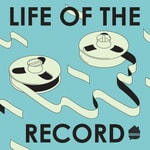Life of the Record – Details, episodes & analysis
Podcast details
Technical and general information from the podcast's RSS feed.

Life of the Record
Life of the Record / Talkhouse
Frequency: 1 episode/41d. Total Eps: 51

Recent rankings
Latest chart positions across Apple Podcasts and Spotify rankings.
Apple Podcasts
🇨🇦 Canada - musicInterviews
27/07/2025#9🇨🇦 Canada - music
27/07/2025#55🇬🇧 Great Britain - musicInterviews
27/07/2025#26🇩🇪 Germany - musicInterviews
27/07/2025#99🇺🇸 USA - musicInterviews
27/07/2025#22🇺🇸 USA - music
27/07/2025#98🇨🇦 Canada - musicInterviews
26/07/2025#9🇨🇦 Canada - music
26/07/2025#68🇬🇧 Great Britain - musicInterviews
26/07/2025#64🇩🇪 Germany - musicInterviews
26/07/2025#76
Spotify
No recent rankings available
Shared links between episodes and podcasts
Links found in episode descriptions and other podcasts that share them.
See allRSS feed quality and score
Technical evaluation of the podcast's RSS feed quality and structure.
See allScore global : 83%
Publication history
Monthly episode publishing history over the past years.
The Making of THEY WANT MY SOUL by Spoon - featuring Britt Daniel, Jim Eno and Alex Fischel
Season 4 · Episode 4
lundi 19 août 2024 • Duration 01:26:06
The Making of DIARY by Sunny Day Real Estate - feat. Jeremy Enigk, Dan Hoerner and William Goldsmith
Season 4 · Episode 3
mercredi 10 juillet 2024 • Duration 01:30:29
The Making of Cursive's DOMESTICA - featuring Tim Kasher
Season 3 · Episode 6
mardi 12 septembre 2023 • Duration 01:20:34
The Making of GIVE UP by The Postal Service - featuring Ben Gibbard and Jimmy Tamborello
Season 3 · Episode 5
mardi 18 juillet 2023 • Duration 01:22:15
The Making of SURFER ROSA by Pixies - featuring Joey Santiago, David Lovering and Steve Albini
Season 3 · Episode 4
mardi 6 juin 2023 • Duration 01:48:21
The Making of VIOLENT FEMMES (Self-Titled) - featuring Gordon Gano, Brian Ritchie and Victor DeLorenzo
Season 3 · Episode 3
mardi 25 avril 2023 • Duration 01:46:02
The Making of LET GO by Nada Surf - featuring Matthew Caws
Season 3 · Episode 2
mardi 14 mars 2023 • Duration 01:11:30
The Making of JAMBOREE by Beat Happening - featuring Calvin Johnson, Heather Lewis, Bret Lunsford, Steve Fisk and Gary Lee Conner
Season 3 · Episode 1
mardi 31 janvier 2023 • Duration 01:22:37
The Making of SONG CYCLE - featuring Van Dyke Parks and Richard Henderson
Season 2 · Episode 12
mardi 13 décembre 2022 • Duration 01:21:02
The Making of VS. by Mission of Burma - featuring Roger Miller, Clint Conley and Peter Prescott
Season 2 · Episode 11
mardi 25 octobre 2022 • Duration 01:47:03